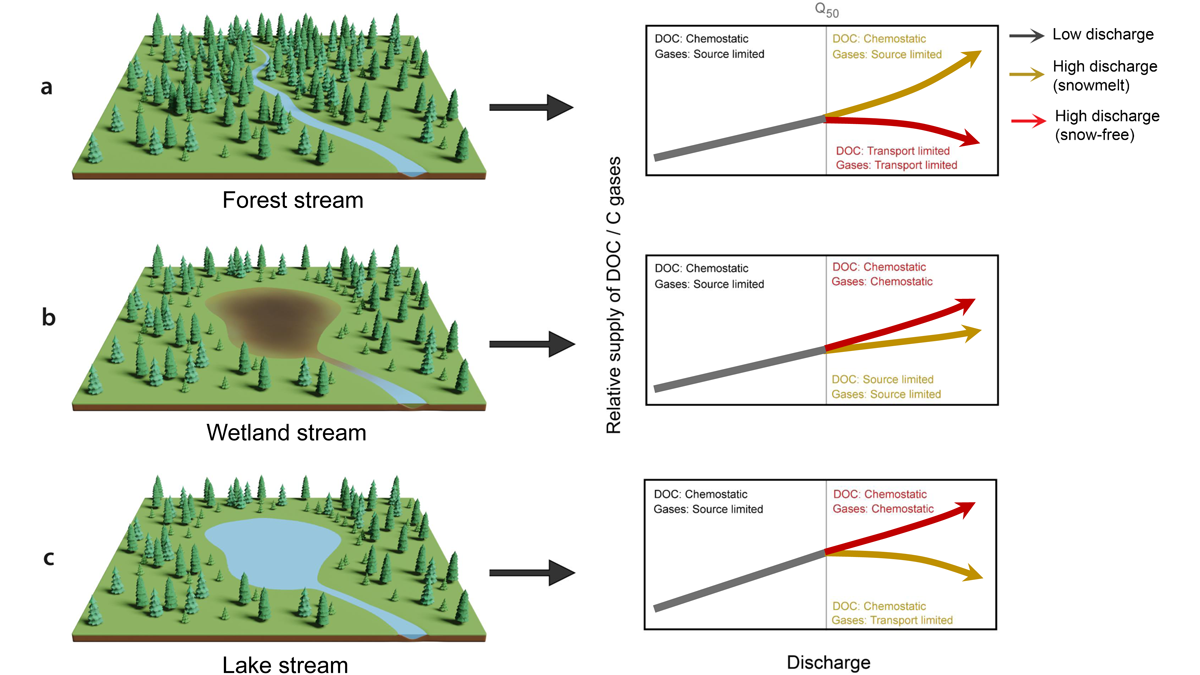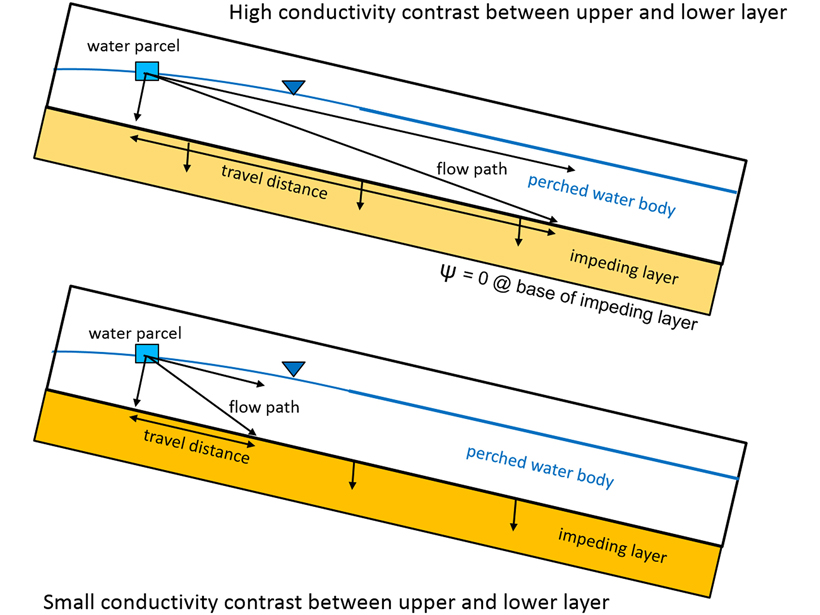Carbon export in boreal catchments depends on the landscape setting and differs for snowmelt and rainfall events.
Ilja van Meerveld
Editor, Water Resources Research
Posted inEditors' Highlights
Repeating Famous Hillslope Experiment Provides New Insights
Repeating a famous hillslope experiment after 55 years shows that soil properties can change within several decades and highlights the importance of a leaky boundary for hillslope drainage.
Posted inEditors' Highlights
Using Radioactive Tracers to Determine the Ages of Streamflow
Radioactive isotope tracers can be used to determine the relationship between the ages of water that is stored in soil and bedrock, water in streams, and the water used by vegetation.
Posted inEditors' Highlights
Upper Hillslopes May Not Contribute Directly to Stormflow
New research challenges long-held ideas about the path of subsurface water from hillslopes to streams.
Posted inScience Updates
Testing the Waters: Mobile Apps for Crowdsourced Streamflow Data
Citizen scientists keep a watchful eye on the world’s streams, catching intermittent streams in action and filling data gaps to construct a more complete hydrologic picture.





